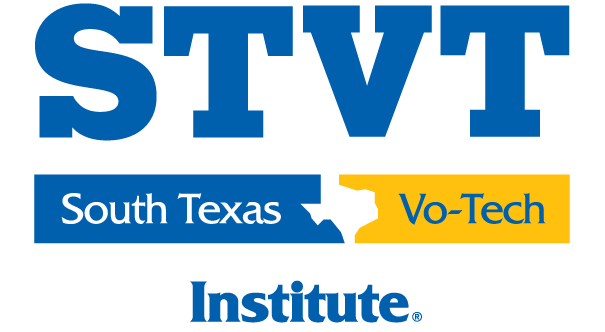A commercial driver’s license, or CDL, is needed to become a professional truck or bus driver. If you are excited to start your new career quickly, you’re probably wondering: How long does it take to get your CDL, and is there any way to make it go by more quickly?
Obtaining a CDL comes with many benefits, including improved career prospects, increased job security, and access to higher-paying positions in the transportation industry.
The truth is that CDL training length depends on quite a few factors. There is no specific answer to how long the training will take because each person will have a different situation to deal with, which can make the licensing process longer or shorter than average. Here are the factors you should consider to understand how long it could take you to get your CDL.
Before you can obtain your commercial driver’s license, you must first apply for a commercial learner’s permit (CLP), which is a regulatory step that allows you to practice driving large commercial vehicles under supervision and is required before earning a full CDL.
Introduction: What is a CDL and Why is it Important?
A Commercial Driver’s License (CDL) is a specialized driver’s license that allows individuals to operate large trucks, buses, and trailers for commercial purposes. In Texas, holding a valid Texas driver’s license is a necessary prerequisite before you can qualify for a CDL. For anyone looking to start a career as a professional truck driver, obtaining a CDL is the essential first step. CDL drivers are responsible for safely transporting goods and passengers across Texas and beyond, making them a vital part of the transportation industry. Whether you want to drive trucks, operate buses, or haul trailers, a CDL ensures you have the training and skills needed to handle these vehicles safely and efficiently. In Texas, meeting the requirements and passing the necessary tests is crucial for anyone who wants to operate commercial vehicles and build a successful career in this growing field.
CDL Classifications and Endorsements
There are several types of CDLs. Even though we call all of these licenses a CDL, it doesn’t mean every CDL is created equal. There are three classifications to choose from that will determine how much weight your truck will be allowed to carry and how hazardous that material is. For example, if your goal is to become a city bus driver, you’ll only need to go for a lower classification compared to someone who wants to drive construction equipment.
These classifications are class A, class B, and class C, and depending on which one you aim for, it can change how long the process takes. Each classification may have a minimum number of training hours or requirements that must be met before you are eligible to test.
Additionally, there are special endorsements you can get. While you don’t need an endorsement to get your CDL and a job, having one will open more doors. You can get a more specialized career or earn a higher salary. However, endorsements are more challenging to obtain. Each endorsement may require passing an additional portion of the CDL exam specific to that endorsement.
CDL Requirements: Are You Eligible?
Before you can begin your journey as a commercial driver in Texas, you’ll need to make sure you meet the CDL requirements. New drivers must be at least 21 years old to drive across state lines or transport hazardous materials, and must already hold a valid Texas driver’s license. You’ll also need to pass a physical examination to ensure you’re fit to operate large vehicles. The process starts with applying for a commercial learner’s permit (CLP), which involves passing a written test to demonstrate your knowledge of commercial driving rules. In addition, you’ll need to provide proof of residency and identity and undergo a background check. Depending on the type of vehicle you plan to drive—such as buses or trailers—and the cargo you’ll be transporting, there may be additional requirements to complete. Make sure to check all the specific requirements for your chosen class of CDL before you apply.
The CDL Application Process: Step-by-Step
Getting your commercial driver’s license in Texas is a multi-step process designed to ensure that only qualified, knowledgeable drivers are behind the wheel of commercial vehicles. Here’s a step-by-step look at what new drivers can expect:
- Meet the Basic Requirements: Before you begin, make sure you meet the minimum requirements. In Texas, you must be at least 18 years old to drive within the state and 21 to drive across state lines or transport hazardous materials. You’ll also need a valid Texas driver’s license.
- Choose Your CDL Class: Decide which class of CDL you need based on the type of vehicle you want to operate. Class A is for combination vehicles like tractor-trailers, Class B is for single vehicles such as buses or large trucks, and Class C covers smaller vehicles or those carrying hazardous materials.
- Submit Your Application: Apply for your CDL at your local Texas Department of Public Safety office. You’ll need to provide proof of identity and residency and complete any required forms.
- Pass the Vision and Written Tests: You’ll be tested on your knowledge of commercial driving rules, safety regulations, and vehicle operation. Passing the written test is required to move forward.
- Obtain Your Commercial Learner’s Permit (CLP): After passing the written exam, you’ll receive a CLP, which allows you to practice driving commercial vehicles under the supervision of a qualified CDL holder. The CLP is valid for 180 days and can be renewed once.
- Practice and Prepare for the Skills Test: With your CLP, you can practice the skills needed to pass the CDL test. This includes pre-trip inspections, basic vehicle control (like backing and turning), and on-road driving.
- Schedule and Pass the Skills Test: The CDL skills test is divided into three parts: a pre-trip inspection, a basic control test, and an on-road driving test. You’ll need to demonstrate your ability to safely operate the vehicle, complete required maneuvers, and show your knowledge of safety procedures.
- Receive Your CDL: Once you pass all three parts of the skills test, you can apply for your CDL. Your new license will be valid for several years, depending on state regulations.
- Maintain Your CDL: To keep your CDL, you must comply with federal and state requirements, such as regular medical exams and any continuing education needed to stay current in the industry.
By following these steps and meeting all requirements, you’ll be well on your way to joining the ranks of professional CDL drivers in Texas.
Class Length and Schedule Design
If you want to earn a CDL, consider a CDL training program. Like any school, the length of time depends on your schedule. At STVT, our CDL Class A program or CDL Class B Program can be completed in 1 to 2 months and helps you prepare to get your CDL.
The first thing to consider is whether or not you’re going to attend class full-time or part-time. Full-time classes run five days a week for about eight hours a day. Part-time classes are held on the weekends or weekday nights. Depending on how much time you’re able to spend in the classroom, you could end up doubling the time it takes you to earn a CDL. The difference will depend on your lifestyle, how much time you think you’ll need to be in class, and whether or not you have other priorities in your schedule, such as family time or work. Students who are committed to their training often choose a truck driving school with excellent instructors to ensure they are well-trained.
The second thing to consider is what your actual schedule is going to look like. In addition to the varying amount of time you’ll spend in the classroom, you’ll also have to practice driving a truck and other skills. You should schedule accordingly if you want to get through it quickly. It also depends on whether you’re able to schedule a CDL test in a timely fashion, as the availability of test times can vary depending on location. Instructors at reputable truck driving schools provide personalized guidance to help students succeed. Carefully following the instructions given by your instructors is essential for successfully passing the CDL test and obtaining your license.
We recommend that prospective drivers choose a program known for preparing the next generation of commercial drivers, so you can be part of a new generation of trained professionals.
Preparation and Practice for New Drivers
Preparation is key to success for new drivers aiming to pass the CDL test and start a rewarding career in the trucking industry. Enrolling in a reputable truck driving school is one of the best ways to gain the knowledge and hands-on experience needed to become a skilled, confident driver. These schools offer a blend of classroom instruction and behind-the-wheel training, ensuring you’re well-versed in both the theory and practice of operating commercial vehicles.
In the classroom, you’ll study the Texas Commercial Driver’s Handbook, which covers essential topics like traffic laws, safety procedures, and industry standards. This manual is a valuable resource for learning the rules of the road and understanding the requirements for commercial drivers in Texas.
Behind the wheel, you’ll work with experienced instructors who will guide you through practical exercises such as backing, turning, and maneuvering large trucks or buses. Practicing these skills under supervision helps you build confidence and ensures you’re ready for the real-world challenges of commercial driving.
A critical part of your training will be mastering the pre-trip inspection. This portion of the CDL test requires you to thoroughly check your vehicle’s tires, brakes, lights, and other equipment to ensure everything is in safe working order. Being able to identify and address potential safety hazards is a must for all professional drivers.
In addition to formal training, new drivers should take every opportunity to practice their driving skills and become familiar with the specific vehicle and equipment they’ll be tested on. The more comfortable you are with your truck and its controls, the better prepared you’ll be to pass the CDL test and begin your career.
By dedicating time to study, practice, and learn from qualified instructors, you’ll be well-equipped to meet the requirements, pass your CDL test, and start your journey as a professional driver in Texas.
CDL Test Format: What to Expect
The CDL test is designed to ensure that drivers have the knowledge and skills needed to operate commercial vehicles safely. The test is divided into three parts: a written exam, a pre-trip inspection, and a skills test. The written exam covers essential topics like traffic laws, safety regulations, and how to properly operate a commercial vehicle. Next, the pre-trip inspection tests your ability to check the vehicle for safety issues and identify any potential hazards before you hit the road. Finally, the skills test evaluates your ability to handle the vehicle in real-world situations, including backing up, turning, and merging into traffic. The exact format of the CDL test may vary depending on the type of vehicle you plan to drive, so it’s important to be prepared for all three parts and understand what will be expected of you on test day.
CDL Costs: What Will You Pay?
The cost of obtaining a commercial driver’s license can vary widely depending on several factors, including the type of license you need, the state you’re in, and the training program you choose. In Texas, new drivers can expect to pay anywhere from $4,000 to $9,000 for CDL training, testing, and licensing fees. Additional costs may include fees for endorsements, such as hazardous materials or passenger transport, which can increase your earning potential as a truck driver. Some companies offer paid training programs or may reimburse you for the cost of obtaining your CDL, making it more affordable to start your career. Before you begin, it’s a good idea to research the costs associated with your chosen program and factor them into your decision to become a professional driver.
Other Factors That Affect Your Timeline
How long it takes to get your CDL can depend on more than just the training program or class schedule. If you already have experience operating heavy vehicles or equipment, you may be able to complete your training and testing more quickly. The availability of training programs and CDL test appointments in your area can also impact your timeline. Don’t forget to account for the time needed to apply for your commercial learner’s permit, pass the written exam, and complete the pre-trip inspection and skills test. The hiring process at your chosen company, the type of equipment you’ll be operating, and your ability to demonstrate the required skills all play a role in how fast you can get on the road. By understanding these factors and planning ahead, you can set yourself up for success and start your career in the trucking industry with confidence.
Career Outlook: What Happens After You Get Your CDL?
Earning your commercial driver’s license opens the door to a wide range of career opportunities in the trucking industry. With a CDL in hand, new drivers can apply for positions with trucking companies, bus lines, and other transportation services that are always on the lookout for qualified, committed employees. Many companies offer on-the-job training, mentorship programs, and even tuition reimbursement to help new CDL drivers get started.
The job outlook for truck drivers remains strong, with employment of heavy and tractor-trailer truck drivers expected to grow by 4% through 2032, according to the U.S. Bureau of Labor Statistics. This steady demand is driven by the continued need to transport goods across the country, especially in high-growth states like Texas. In fact, Texas is one of the top states for trucking jobs due to its size, shipping volume, and central location. According to the U.S. Bureau of Labor Statistics, the average annual salary for truck drivers in Texas is approximately $56,470, with opportunities to earn more depending on experience, endorsements, and routes. For those looking to enter a reliable and well-paying field, truck driving in Texas offers strong career prospects and room for advancement.
Beyond driving, a CDL can lead to careers in logistics, transportation management, or safety compliance. Some drivers choose to become instructors, training the next generation of commercial drivers. Others may decide to become independent contractors, operating their own trucks and enjoying greater flexibility and earning potential—though this path requires a solid understanding of business management and investment in equipment.
No matter which direction you choose, success in the trucking industry depends on your commitment to safety, ongoing training, and a willingness to adapt to new technologies and regulations. With the right attitude and experience, CDL drivers can build a stable, rewarding career with plenty of room for growth and advancement.
Whether you’re just starting out or looking to take your career to the next level, obtaining your CDL is the first step toward a future filled with opportunity in the world of commercial transportation.
Other Factors
License type, schedules, endorsements, and class lengths aren’t the only things that can change how soon you get your CDL. There are a few other factors to consider as well.
The first is your skill as a driver. It should go without saying that being a truck driver isn’t as simple as driving a regular car, and even driving a regular car can take a decent amount of skill and confidence. Simply put, if you need to spend more time learning to drive a truck, it will take you longer to get your license, even if the rest of the process is streamlined. You will be tested on your ability to safely operate a commercial vehicle, and only qualified individuals will become CDL holders.
The second is what kind of truck you’re driving. Some trucks are automatic, and others are manual, and this changes the way they handle and how you control them. If you’re learning to drive in a way that isn’t as intuitive for you, it will take you longer to perfect your skills enough to take the test.
With these two factors, it’s important to consider your abilities and knowledge before you decide how much time you need to spend behind the wheel. Learning to drive your truck can take many hours, even under ideal circumstances, so there are several factors to consider. Ensuring the accuracy of all required documentation and test procedures is essential to avoid unnecessary delays in the licensing process.
Get Your Class A CDL at STVT
If you’re looking to earn a Class A CDL through hands-on training at a school that understands your specific needs and situation, then maybe you’re looking to earn your CDL training certificate at STVT. Available at our campuses in Brownsville, McAllen, and San Antonio, we’ll help get you on the road as a safe, confident, and well-paid commercial truck driver by teaching you the important skills. Consider enrolling in our program today, or contact us to learn more.
Disclaimers: Information within this blog is for general information purposes only. South Texas Vocational Technical Institute does not assume or guarantee certification/licensures, specific job/career positions, income earning potential, or salary expectations based on the programs offered at South Texas Vocational Technical Institute. Career and program information statements in this blog do not guarantee that programs or other information mentioned are offered at South Texas Vocational Technical Institute.



